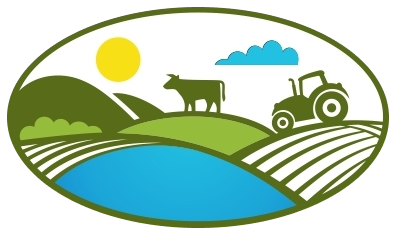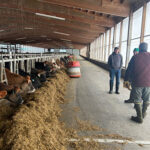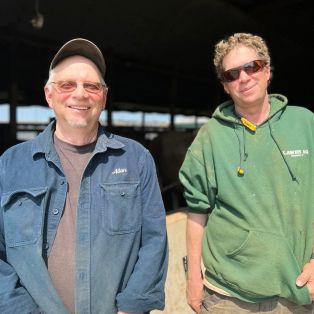
Dairy farmer Allan Brisson of Allandra Farm is a manure injection evangelist. He’ll share the good word about this agriculture practice to anyone who will listen.
“I basically preach it–I don’t know why. I guess it’s because I’m passionate about it,” explains Allan. “It works so well and we all should be working in that direction.”
Allan uses a dragline manure injection system. He connects a hose to a pump at his manure pit and connects the other end of the hose to the manure injector attached to his tractor. As he drives across the field, disks akin to pizza cutters create slits and the manure is injected 3.5” into the soil. By injecting rather than broadcasting the manure, Allan reduces nitrogen loss, phosphorus run-off, and unpleasant odors.
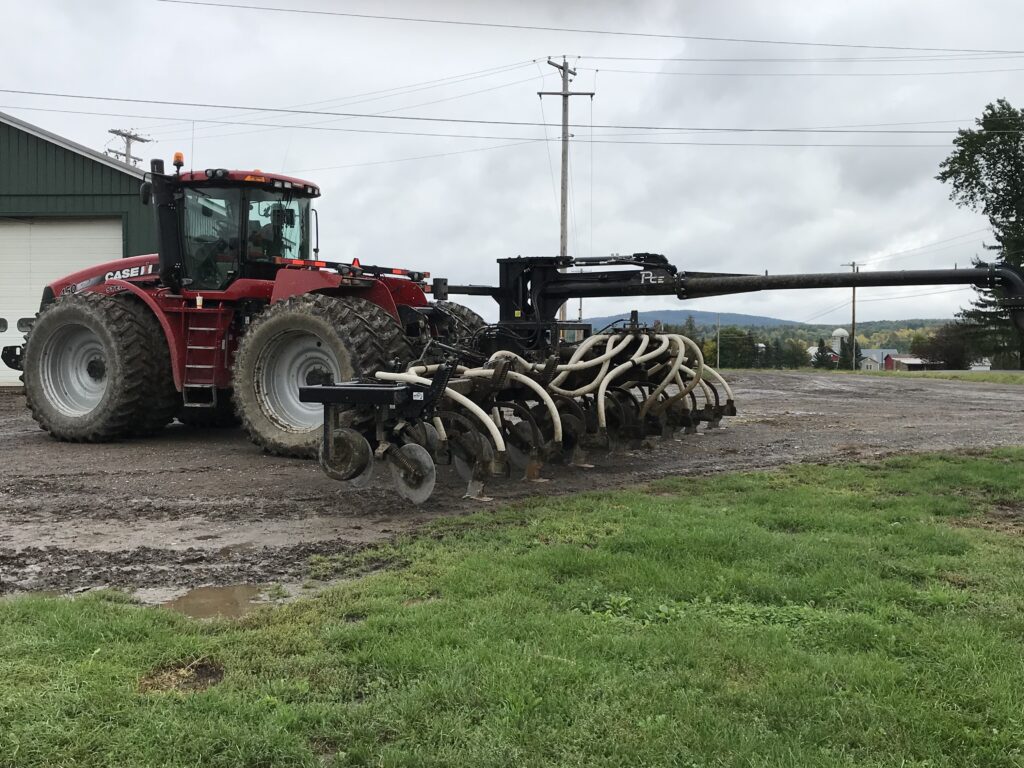
Before becoming the manure injection enthusiast he is today, Allan started his dairy farm from humble beginnings. He left home at 21, bringing the 40 cows and 40 heifers he had accumulated through 4H with him.
Over the years, he has grown the farm to 2,500 acres, working alongside his son, Michael, and 19 employees. Allan is the General Manager, while Michael oversees the herd and fields. They milk 1,000 cows on two different sites: 800 Holsteins at the main farm in Ferrisburgh and 200 Brown Swiss at a farm in Waltham. All of their milk is sold to Agrimark to make Cabot products.
When we visited with Allan on a bright spring day in May 2023, he and Michael were busy making round bale baleage. Following many days of cold, rainy weather, the sun was finally shining and the wind had shifted to the north. Their fields were drying out nicely, just in time for corn planting.
But what about injecting manure?
“We don’t inject in the spring because it makes the soil too wet,” Allan explains. “Much of the injection happens in the summer or fall.”
Allan and Michael started experimenting with manure injection on corn six years ago.
Two years later, they asked, “Gee, we wonder if the injector would work on grass?”
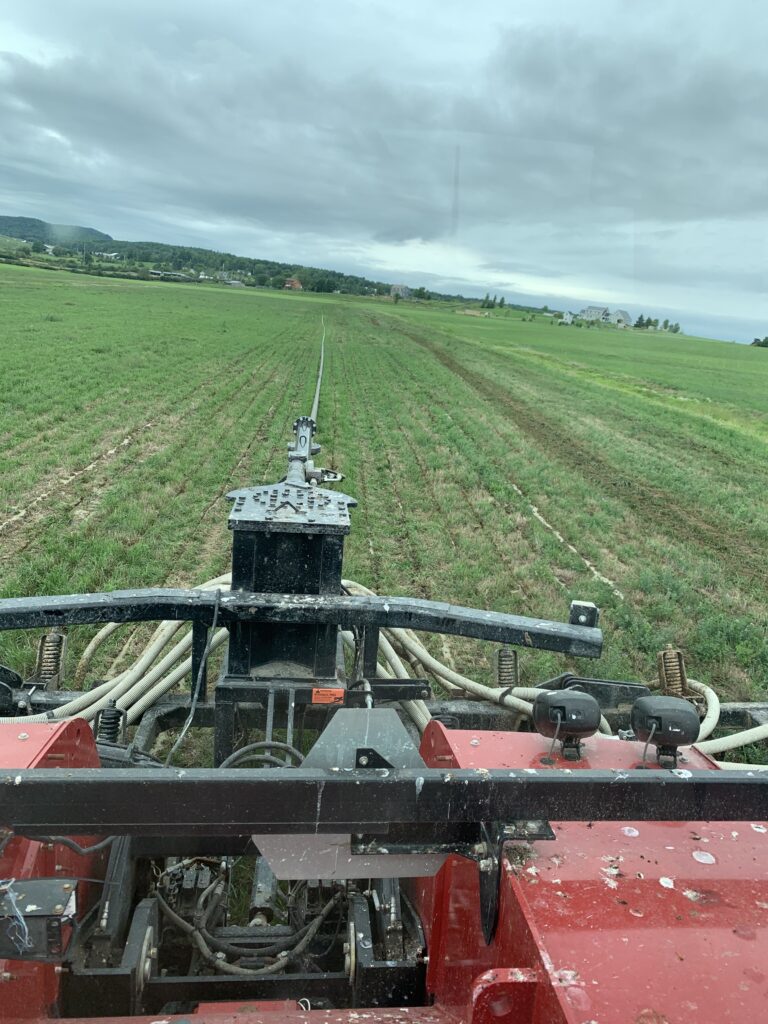
They tested the practice on two acres. It didn’t take long for them to adopt manure injection farm-wide.
“We were just amazed,” says Allan. “When you’re injecting, you’re going slow, so it doesn’t disturb the soil so much.” Minimizing soil disturbance is the key to its health; soil that is overly worked is susceptible to erosion and nutrient run-off.
And it’s not just the soil that’s healthier–it’s the grass, too.
“The grass doesn’t like to get pooped on either,” Allan says with a laugh. “It’s not happy for a few days. Manure burns it.”
Six weeks following manure injection, Allan and Michael find they have a hearty grass crop with 20% protein.
“It helps us save a ton of money and increases the quality of our feed,” observes Allan. “We went from being an operation that typically was looking to buy feed to an operation that has feed to sell.”
He attributes much of his money savings to the decreased loss of nitrogen.
“When you spread manure on top of the ground, I think it’s a given you lose 80% or more of the nitrogen to the air,” Allan explains. “If you can smell manure being spread, the farmer is losing fertilizer value. When you inject, you cut the smell down by 90% and therefore you’re conserving your nitrogen.”

Allan estimates that if he were to resume spreading manure instead of injecting it, he would have to apply 200 pounds of urea in order to achieve that same 20% protein in his grass. Urea costs around $100 per acre; multiplied across 1000 acres, that is $100,000 in savings.
He acknowledges manure injection does not result in any fuel or labor savings for him, however.
“Anything more you do, takes a little more labor and management,” Allan notes. “But I think the quality of feed is a good return. Last year, we were able to save 60 cents per cow per day on rations. When you multiply that by 900 cows, that’s $540 in savings each day. That’s suddenly $190,000 per year.”
And Allan is quick to add, “Then you add in the water quality aspect? It’s a no brainer.”
He is hopeful that the State of Vermont will continue to increase its water quality incentives to encourage and support more farmers in adopting manure injection.
Last year, he participated in the new Vermont Pay for Phosphorus Program (VPFP) which provides performance-based payments to farmers for reductions of phosphorus losses from their fields.
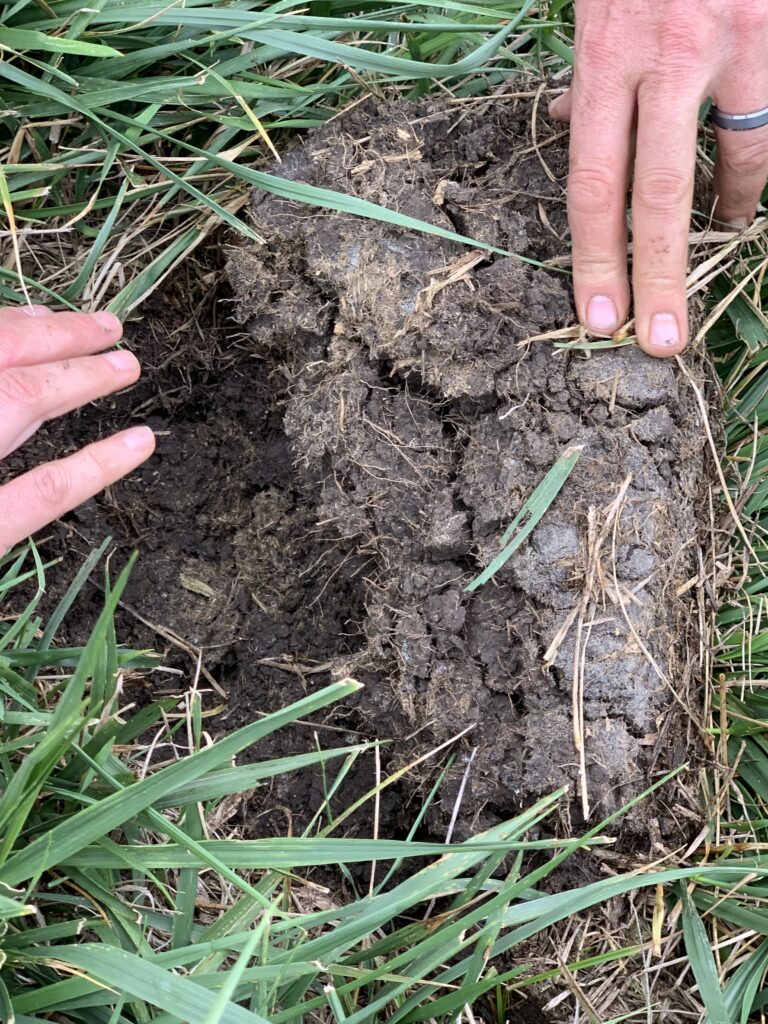
“I understand that our farm didn’t have to do anything extra and we’re going to max out the program,” Allan points out. “It’s great that they came up with the program, but the reality is: If people sat down and did the math [on manure injection], they wouldn’t need the program.”
For all of Allan’s passion for manure injection, it is just one of many innovative agriculture practices he uses to care for soil and water health and boost his bottom line. He does not till most of his land, and he plants and harvests cover crops as much as possible.
“Some farmers are really leery of cover crops,” notes Allan. “If you plant rye, it will grow six feet tall. It’s hard to do something with it if it gets away from you.”
For Allan, the solution has been to plant triticale. “Triticale does not grow that tall,” he says. “Every time we’ve harvested triticale, we’ve harvested top quality feed.”
Allan was by no means an early adopter of no-till and cover crops. Because of Addison County’s heavy clay soils, he was initially skeptical of these practices.
A chance encounter with former UVM Extension Agronomy Specialist Jeff Carter at the Addison County Fair & Field Days a number of years ago changed all that.
“‘Let your cover crops do your tillage for you,’” Allan recounts Jeff saying. “And he is exactly right. Now my son has a saying: ‘Where you have a good cover crop, you typically have a good corn crop.”
No-till and cover crops are not the only practices Allan has changed his mind about.
“If you had said to me ten years ago there was a place for round bale baleage on a large farm, I would have said no way,” remarks Allan.
But now?
“We tried it. We have fantastic feed with very little shrink in the feed. We don’t have to worry about packing a bunker. We don’t have to worry about open pile. We don’t have to worry about run-off from the bunks,” he observes.
What has pushed Allan to try new things out of his comfort zone?
“I enjoy clean water as much as anyone–the beauty of Lake Champlain, a clean river. It’s just not ok to violate it,” he says. “So you figure out a better way to do something that’s not only good for the environment, it’s also good for you. It can’t any better than that, can it?”
